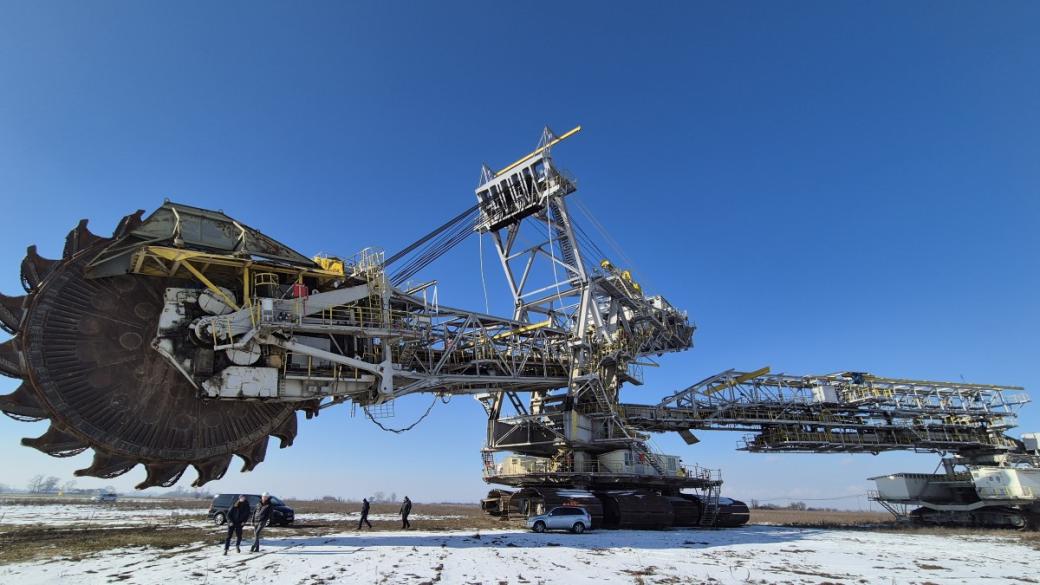The giant with a gentle name that will remind us of the coal past of Poland's Konin
Dolores will turn the region's mining heritage into an unforgettable tourist experience

© ECONOMIC.BG / Economic.bg
In the past, hurricanes only had female names. It seems that this convention still applies to the mega-machines that serve miners faithfully for years and dig up thousands of tons of earth. An example of this is Dolores – a "girl" of impressive size, which proudly towers in a field near the Jóźwin open-pit coal mine, part of the coal basin located near the Polish city of Konin. And it is Dolores that will have the honor of "telling" tourists about the region’s coal past, once that industry shuts down.
Dolores is not just a huge excavator, but a symbol of the transformation of the region and it will mark the beginning of a special new branch of the Konin Regional Museum. The aim is to preserve the local cultural heritage, which over the years has been mainly associated with coal mining.
Dolores' story
The bucket-wheel excavator is a SRs-1800 model, manufactured in Germany. It is an emblematic representative of the era of heavy mining equipment. Its design, hydraulic system and enormous capacity make the machine not only a powerful digging tool but also a witness to a time when such giant machines were the engine of industrial progress in mining regions.
We, from Economic.bg, visited Dolores on-site and got acquainted with its impressive dimensions. Its weight exceeds 2.5 thousand tons, and its total length is 118 meters. Its height is 38 meters, and its width is 27 meters.
The history of the machine is as impressive as its size. Before ending up in Poland, Dolores spent the first few years of its existence in Spain. It served miners in the Asturias region faithfully. Then the machine was transported to Poland in 2009, along with its twin - Carmen. However, transporting such equipment is no easy task. It took about 400 trucks and 4 ships to move all the parts of the excavators to their new home – the mines in the Konin region.
For the next 10 years, Dolores and Carmen played a key role in the mining operations in the region and thus lived their second lives until 2020. Unfortunately, Carmen was decommissioned for scrap, but Dolores got a chance to live even a third life. At that time, the excavator was owned by the Ze Pak group, which was actively involved in the transformation of the region. We will tell you more about ZePak and its “Work After Coal” project in a special podcast episode.
In cooperation with Marek Wozniak, Marshal of the Greater Poland Region, a project was initiated to preserve the mining identity and to save the Dolores excavator. The technical operation to remove the machine from the mine took about five months. It was brought to the surface via a specially built ramp.
The value of Dolores is currently estimated at $500,000. The machine is still fully functional.
Mining traditions
The region around Konin has deep 70-year-old mining roots, mainly associated with the extraction of lignite coal. Since the mid-20th century, open-pit mines in this area have contributed to Poland's significant energy autonomy, supplying power plants and industrial enterprises. The region's economy flourished during this time as people flocked to work there.
Mining has shaped the culture and identity of local communities. In Konin, the history of tireless work in the mines is celebrated every year on December 4. It is the day to honor St. Barbara, considered the patron saint of miners. During these celebrations, prayer services, concerts and other cultural events are organized, bringing together both miners and the local community to celebrate the legacy of labor and the history of mining. This holiday is not only a religious event but also a cultural ritual that unites people and reminds them of the importance of the mining tradition and the identity of the region.
Today, with the exit from coal looming on the horizon, the legacy of these mining operations remains a living part of the region, and sites like the Dolores excavator serve as powerful monuments, telling the story of mining and inspiring future generations. Dolores is not just a technical marvel, she is an emotional bridge between the past and the future, a living witness to a time when such machines were the true engines of industrial progress, working alongside hundreds of people. The miners’ work, filled with diligence, courage and an indomitable spirit, complements the story of these giant machines.
Co-Funded by the European Union. Views and opinions expressed are however those of the author(s) only and do not necessarily reflect those of the European Union or the Managing Authority. Neither the European Union nor the Managing Authority can be held responsible for them.
Translated by Tzvetozar Vincent Iolov


 Gloria Hristova
Gloria Hristova